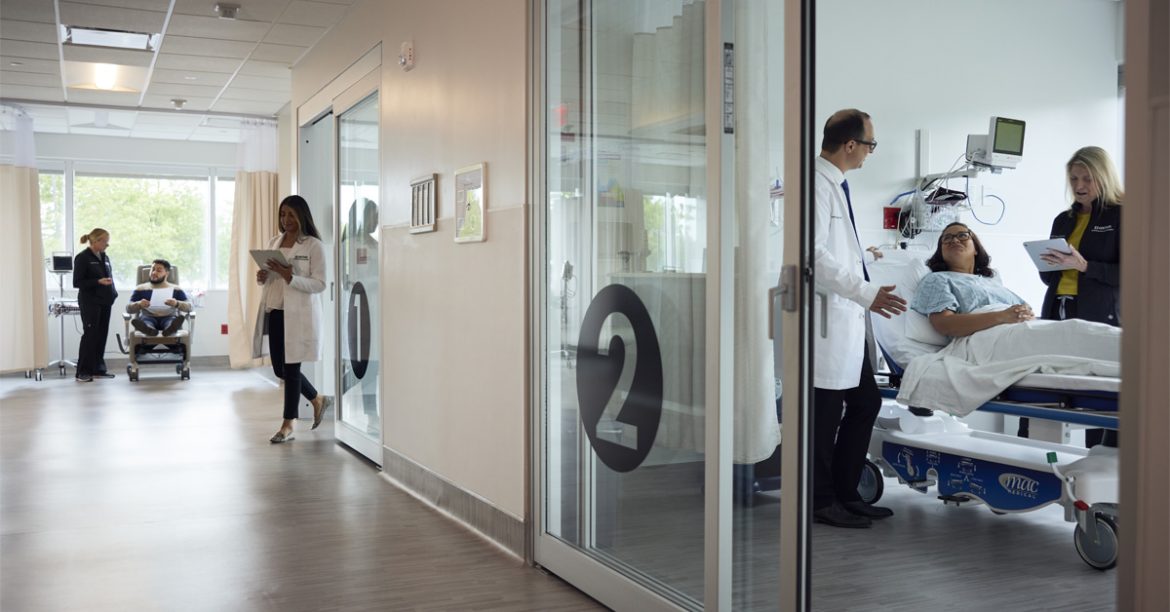Back pain is one of the leading causes of chronic disability in the world. It can be due to a variety of causes, and people suffering from it often look for the best possible treatments. Solving back pain can help you regain your quality of life.
Various surgeries are available for back pain and spine conditions. One such procedure is ALIF surgery. Here’s what you should know about it.
What is ALIF?
Anterior lumbar interbody fusion (ALIF) is a surgical procedure.
This procedure involves removing a damaged vertebral disc or bone material from the spine and inserting a bone graft or a spacer filled with bone graft material between the vertebrae. The goal is to stabilize the spine by allowing new bone growth to occur, joining or fusing them together over time.
The name of this procedure comes from the specific surgical approach your doctor uses:
- Anterior: Surgeons access your lower back from the front of your body.
- Lumbar: This part of your spine is located in your lower back.
- Interbody: A bone or titanium graft is inserted between your vertebrae.
- Fusion: Joining your vertebrae together to stabilize your spine.
Approaching the spine from the front of your body allows direct access to the lumbar spine without disturbing the spinal nerves.
What Conditions Does ALIF Treat?
ALIF and other lumbar surgeries are considered when pain management, physical therapy, or other treatments haven’t successfully relieved your back issues. It can be used to treat:
- – when the discs between the vertebrae break down, causing pain and back instability.
- – a condition where one vertebra slips out of place and onto the one below it.
- Scoliosis – curvature of the spine.
- – a narrowing of the spinal canal that can compress nerves.
What Happens During the ALIF Procedure?
An ALIF surgery typically lasts about one to two hours and is done under anesthesia. The surgery may take longer if multiple damaged discs need replacement or if you have had previous abdominal surgery.The surgeon makes a small incision in your lower abdomen, just below your belly button, targeting the area of the damaged disc or discs.
This incision is usually 2 to 3 inches long. Your abdominal organs are then positioned to enable the surgeon to access your vertebrae.
The surgeon will remove the damaged disc and prepare the space for the graft.
A bone graft or a spacer filled with bone graft material is inserted into the empty disc space. The graft may be held with stabilizing devices such as screws, rods, or plates to keep it in place.
Your abdominal muscles will then be secured with internal stitches and the incision closed.
After the surgery, you’ll be moved to a recovery area to rest and recover from the anesthesia.
You may need to stay in the hospital for three to four days, during which you will begin your recovery with standing and walking assistance.
Pain and discomfort are common following surgery but can be managed with medications.
How Long Does ALIF Recovery Take?
Recovering from ALIF surgery is a long-term process that requires your patience.
It typically takes several months before you can safely lift heavy objects, bend at the waist, or twist your upper body without discomfort.
The bone graft used in your surgery will gradually fuse with your vertebrae, but this process can take up to a year to complete.
During the initial weeks of recovery, you must avoid strenuous activities and follow your surgeon’s instructions to ensure proper healing and minimize pain.
ALIF surgery is an effective lower back pain treatment.
Talk to A Neurosurgeon about ALIF Surgery
If you are considering ALIF surgery, you’ve likely tried more conservative approaches to manage your back discomfort. While the idea of back surgery might make you feel anxious, this procedure could be the key to relieving your pain and improving your mobility. Partnering with an experienced neurosurgeon is the key to finding the best surgical treatment for your back pain.
Don’t continue to live with lower back pain – today!



